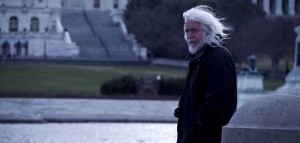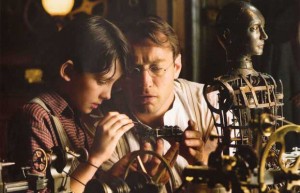![]()

Despite the complexities, the DP says that his interaction with Scorsese on Hugo was not very different from previous collaborations, which date back to Casino in 1995 and include Aviator and last year’s Shutter Island. “Certainly there was a formidable learning curve in Hugo, especially with regards to 3D,” he observes. “But beyond that, our primary goal remained the same, to create the finest film experience possible.” He says the 3D part of the equation did not constrain him as a DP. “In fact it broadened my vision and added a great deal of knowledge to what existed,” he asserts.
Hugo is a venturesome and visually lavish tale about an orphan living in a 1930s’ Paris train station. It is filled with demanding imaginative sequences that seamlessly meld camerawork, production design and computer graphics. Though utilizing the latest motion picture technologies, the film is also an homage to early moviemaking by Scorsese, an avid cinephile: the final third of the film is largely devoted to the contributions of Georges Melies who pioneered cinema artistry at the beginning of the Twentieth Century.
The movie has a retro look with browns, blues and yellows predominant. That look, Richardson recalls, came out of a conversation he had with Scorsese, production designer Dante Ferretti and costume designer Sandy Powell about the early use of color in both motion pictures and still photography. “The primary process we focused on was Autochrome, which was invented by the Lumiere brothers,” he notes. “But since we were shooting digitally and in 3D there was no conceivable method that I came upon to achieve this look, so I created a LUT (look up table) that emulated the qualities of Autochrome but that had its own individual character as well.”

Another issue, Richardson’s lighting of sets had to be in sync with what would be filled in later by CG. But VFX supervisor Rob Legato “was astounding in that he did not ask me to light a scene or set just to make his efforts easier in post. He wanted the lighting to reflect what Marty wanted,” says the DP. “I also felt that there was no choice but to design the lighting that fit the intentions of the director.”
After his experience on Hugo, the DP says he is open to undertaking a similar project in the future. “I am excited by all the challenges of digital and 3D because they force me to face myself and open me up to the unknown,” he notes. “I wish to continue to grow as a cinematographer, so yes I would be eager to do it all again.”
Richardson, 56, has been nominated six times for the Academy Award for best cinematography, and won twice. His first Oscar was for J.F.K., directed by Oliver Stone, another long-time collaborator. The second was for Aviator (on the Howard Hughes biopic the DP was asked by Scorsese to also pull off a technical feat, to re-create the look of two-strip Technicolor, originally used in the 1930s, to give the film a period feel). Other nods were for Platoon, Born on the Fourth of July, Snow Falling on Cedars and Inglorious Basterds. He has received nine nominations from the American Society of Cinematographers for outstanding cinematography on a theatrical release.
Richardson recently completed filming World Z for director Marc Forster. Next on tap is Django Unchained, a reunion with director Quentin Tarantino.





